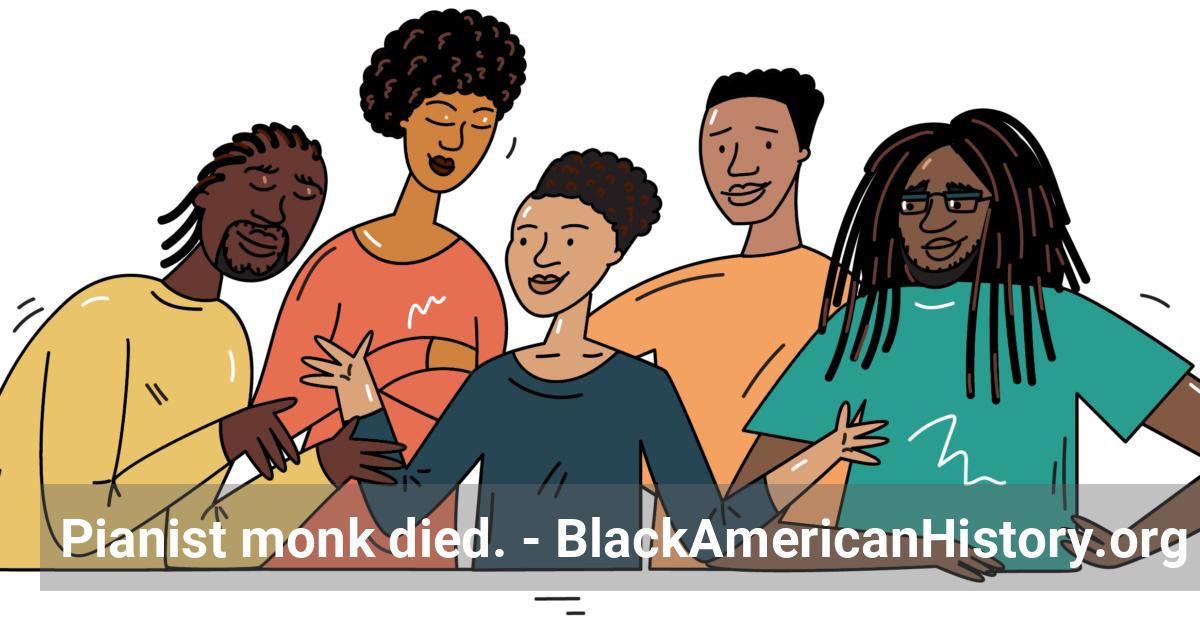Home / Full timeline / Pianist Thelonious Sphere Monk dies after suffering a massive stroke.
 Pianist Thelonious Sphere Monk dies after suffering a massive stroke.
Pianist Thelonious Sphere Monk dies after suffering a massive stroke.
1982 (Feb 17)
Pianist Thelonious Sphere Monk died after suffering a massive stroke. An important pioneer in the development of bop, Monk played a vital role in the jazz revolution of the early 1940s. At first, the pianist—a gifted technician and composer—was appreciated only by a small circle of New York's brightest. His angular melodies, harmonies marked by jarring surprises, unusual treatment of notes, and the absence of notes conspired to limit his initial appeal. Before his death in 1982, however, he was generally recognized as one of the founding fathers of modern jazz, and he is considered by some to be the most important jazz composer since Duke Ellington. Born October 10, 1917, in Rocky Mount, North Carolina, Monk moved with his family to New York City in the early 1920s. At the age of eleven, weekly piano lessons supplemented Monk's rigorous gospel training, and he accompanied the Baptist choir in which his mother sang. Two years later, Monk was already playing in a trio at a local bar and grill, and he eventually won so many of the weekly Apollo Theater amateur contests that he was banned from entering any more. At age sixteen he left school to travel with an evangelical faith healer and preacher, and he returned the following year, well schooled in rhythm and blues accompaniment, to form his first group. With the exception of some brief work with the Lucky Millander Band and Coleman Hawkins, Monk was generally the leader of his own small groups. In the early 1940s, Monk found himself in the midst of a new wave of jazz music. Bebop, a faster and more complex style than its swing predecessor, was spontaneously generated late at night in jam sessions at jazz clubs, most notably at Minton's, where Monk reigned as house pianist. In fact, Keyboard claimed "Monk was at the eye of what would become the bebop hurricane." Monk's own music, however, was developing a unique style, and by the early 1950s the iconoclastic composer had penned the classics Blue Monk, Round Midnight, and Epistrophy. In 1951, Monk's career—already faltering—was dealt a serious blow as the result of questionable charges of narcotics possession that landed him in jail for sixty days and, more importantly, caused the New York State Liquor Authority to rescind his cabaret card. Without the card, Monk was prevented from playing local club dates and relied on the support of his patron and friend, the Baroness Nica de Koenigswarter. Within a few years his luck changed: Monk gave a series of concerts in Paris in 1954, cut Pure Monk, his first solo album, and signed with the Riverside label. An eight-month engagement at New York's Five Spot in 1957 established Monk as a cult icon and there he met jazz newcomer John Coltrane. In the following couple of years, the improvisational genius made several recordings for Riverside, including Brilliant Corners, Thelonious Himself, and Monk with Coltrane. These recordings were so successful that in 1962 Columbia Records offered Monk a lucrative contract, and in 1964 Time magazine featured his picture on its cover, a rare distinction for a jazz musician. In the following decade, living up to the New York Post's description of him as "one of jazz's great eccentrics," Monk retreated from the public eye, making only a few solo and trio recordings for Black Lion in London and giving occasional concerts. After suffering a massive stroke on February 17, 1982, Monk died. Monk's son, T.S. Monk, Jr., a drummer, recorded with blue note; his recording, Take One, was a tribute to his father and other bop composers.
References:
- • Hornsby, Alton. Chronology of African-American History: Significant Events and People from 1619 to the Present. Detroit: Gale Research, 1995.
